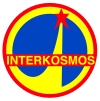Soyuz 28
| COSPAR ID | 1978-023A |
|---|---|
| SATCAT no. | 10694 |

| |
Soyuz 28 (Russian: Союз 28, Union 28) was a 1978 Soviet manned mission to the orbiting Salyut 6 space station. It was the fourth mission to the station, the third successful docking, and the second visit to the resident crew launched in Soyuz 26.
Cosmonaut Vladimír Remek from Czechoslovakia became the first person launched into space who was not a citizen of the United States or the Soviet Union. The other crew member was Aleksei Gubarev. The flight was the first mission in the Intercosmos program that gave Eastern Bloc and other Communist countries access to space through manned and unmanned launches.
Crew
| Position | Cosmonaut | |
|---|---|---|
| Commander | Aleksei Gubarev EP-2 Second spaceflight | |
| Research Cosmonaut | Vladimír Remek, IK EP-2 First spaceflight | |
Backup crew
| Position | Cosmonaut | |
|---|---|---|
| Commander | Nikolai Rukavishnikov | |
| Research Cosmonaut | Oldřich Pelčák, IK | |
Mission parameters
- Mass: 6,800 kg (15,000 lb)
- Perigee: 198.9 km (123.6 mi)
- Apogee: 275.6 km (171.2 mi)
- Inclination: 51.65°
- Period: 88.95 minutes
Mission highlights

The Soyuz 28 mission was the first Intercosmos flight, whereby military pilots from Soviet bloc nations were flown on flights of about eight days to a Soviet space station. Pilots from other nations would eventually also fly. The program was a reaction to American plans to fly Europeans on space shuttle missions.[2]
Gubarev and Remek, the first non-Soviet, non-American to travel to space, were launched aboard Soyuz 28 on 2 March 1978, after a three-day delay of unspecified cause. The crew docked with the orbiting Salyut 6 space station, and greeted the occupants Georgi Grechko and Yuri Romanenko who had arrived on Soyuz 26 in December. Gubarev and Grechko had previously flown together on Soyuz 17 to the Salyut 4 space station in 1975.[3]
The day after the docking, the Soyuz 26 crew celebrated their breaking of the space endurance record of 84 days, set by the Skylab 4 crew in 1974.[3]
The mission's purpose was mainly political. The four crew members aboard Salyut 6 received messages from Soviet premier Leonid Brezhnev and Gustáv Husák, the leader of Czechoslovakia. It was hoped that the Intercosmos flights would help prop up some of the failing communist regimes in the Bloc. Husák was unpopular in Czechoslovakia after reversing the reforms of his predecessor (who had been ousted by Warsaw Pact countries). Romanenko spoke on behalf of the crew saying:
- "We shall apply all our strengths and knowledge to defend the great honour of this international crew, which has started to carry our this joint program of socialist countries' research and utilization of outer space for peaceful purposes."[citation needed]
While the mission had a political purpose, experiments were carried out, including one which monitored the growth of Chlorella seaweed in zero gravity, another which used the on-board Splav furnace to melt glass, lead, silver and copper chlorides, and an experiment called Oxymeter which measured oxygen in human tissue.[2] On 10 March, the Soyuz 28 crew prepared for their return to Earth, packing experiments and testing systems. They undocked from the station and landed 310 km west of Tselinograd later that day.[2]
A joke appeared soon after the mission that Remek's hand had mysteriously turned red. He informed the doctors, the joke goes, that this was because every time he went to touch something, the Soviet crewmembers would slap his hand and yell, "Don't touch that!"[citation needed]
External links
- http://www.spacefacts.de/mission/english/soyuz-28.htm
- http://www.terra.es/personal/heimdall/eng/soyuz28.htm
- http://www.spacepatches.info/salyut/s28.html
- http://www.astronautix.com/flights/salt6ep2.htm
- http://books.nap.edu/books/0309085489/html/index.html
References
- ^ "Baikonur LC1". Encyclopedia Astronautica. Retrieved 2009-03-04.
- ^ a b c Newkirk, Dennis (1990). Almanac of Soviet Manned Space Flight. Houston, Texas: Gulf Publishing Company. ISBN 0-87201-848-2.
- ^ a b Clark, Phillip (1988). The Soviet Manned Space Program. New York: Orion Books, a division of Crown Publishers, Inc. ISBN 0-517-56954-X.


